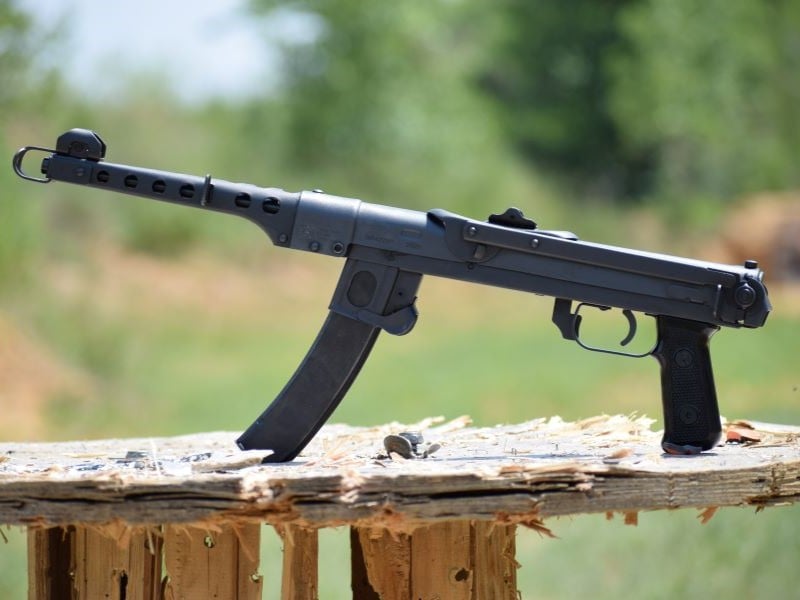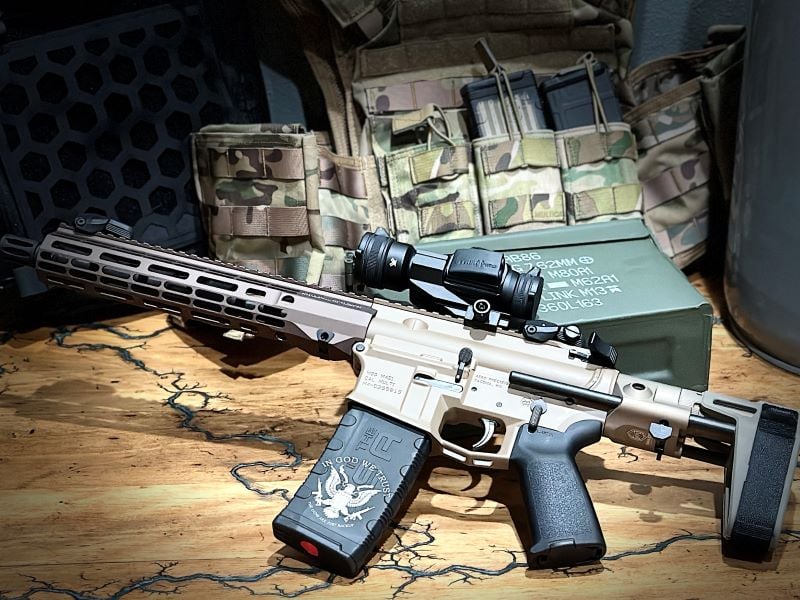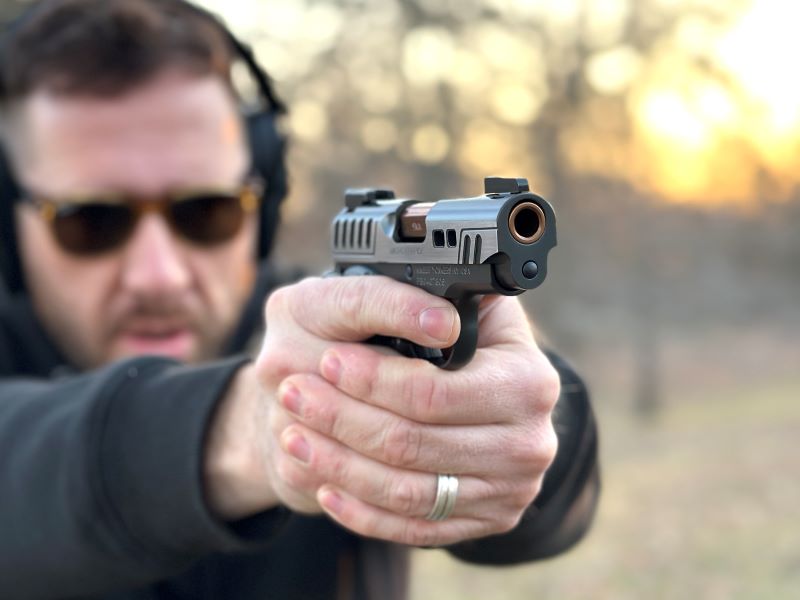If you like guns, own guns, or collect guns, you can’t really go long without developing a taste for the classic guns of WWII. I’m not sure I could even pick a favorite gun because so many greats came from that time. The US M1 Thompson, M1 Garand, and Colt 1911 are among my favorite US guns.
The Russians had the PPSH-41, PPS-43, and don’t forget the Germans StG-44 and MP40. The BAR, M3A1 (Grease gun), and the Nambu pistols are all classics from the war that catch your attention. The Hi-Power was designed by John Moses Browning, but he died before it could be finished and manufactured. FN completed the gun and start making it a few years before Germany overtook the FN factory and started making the gun for themselves.

The Hi-Power was used by multiple countries on both sides of the war. Several shotguns like the legendary Winchester Model 1897, known as the “trench gun,” were also used in the war. Some of these guns were around long before WWII even started while others were developed because of the war.
Most of these guns had a reputation for being tough and deadly. Some were simply easy to mass produce, making it easier to arm thousands of soldiers being recruited for war. But how do those guns hold up to the modern weapons of today?
Caliber, ammo capacity, and material
The 1911 handgun was used extensively in WWII and the .45 caliber has remained a solid round with massive stopping power. This is one reason the 1911 pistol was so popular. At close distances, the .45 would literally knock people down. But one significant change since the days of WWII firearms is the ammo capacity. Some of the guns in WWII held a lot of ammo, but in general, they held less than modern guns do.
A 1911 handgun will hold seven rounds of .45 ammunition. In comparison, the Glock 21 holds 13 rounds of .45 ammunition. Submachine guns held plenty of ammo, but they were also heavy to lug around. When guns were being produced for WWII, the idea of plastic or polymer wasn’t a thing yet. Guns were made from metal, which made them heavier. Stamped receivers made the guns lighter and easier to produce, but not as light and easy to make as a gun today.

Accessories and customization
Accessories weren’t really a thing for guns in WWII. There were a few attachments made to hold a light on the rifle and bayonets were common. But most of them didn’t have any type of rail system for attaching lights, lasers, magnifiers, or red dots to them. Most of the accessories we use today hadn’t been invented yet for use on handguns and rifles. Most guns today allow for some type of customization.
Glow-in-the-dark sights, lights, red dots, lasers, pistol grips, etc. are all available accessories. It’s easy to forget how much we rely on those accessories until you pick up a WWII-era gun and use it for a while. One of the last times we set the range up for some multi-gun shooting, I took my PPS-43 on a run. It was a blast to shoot and everyone on the range wanted a turn with it. But I must admit, it wouldn’t hold up to a modern sub-gun size weapon.

A lot of thought is now put into the placement of the slide release, mag release, safety, charging handle, etc. The trigger on a lower-end gun today would rival many of the mass-produced WWII guns. Like anything else, time has allowed a better understanding of materials and how to use them.
Is there a use for older guns?
When you start comparing modern guns with older ones, the new guns win. They are more accurate, lighter, hold more ammo, and allow for more accessories. You can customize most modern guns a great deal while older guns are limited in what you can do to them. But that also doesn’t make these guns obsolete. Could an M1 Garand, Thompson M1, or PPSH be used to defend your home? Absolutely.

But the newer cars will get you there faster with less gas and keep you a lot cooler during the drive. They also have navigation, satellite radio, and other perks that older cars do not. Guns are somewhat the same in this area. New ones have perks and modern capabilities that older guns didn’t. Old ones can still be used for some purposes if that’s what you like.
Is one better than the other?
We could compare WWII guns with modern guns all day and probably find that modern guns are just more efficient than older ones. But the older guns represent a style of history that modern guns don’t. They don’t have to outperform modern guns to keep their worth. They were the legends of the day and legends never die.
No matter how advanced firearms become, they won’t replace the classic guns that so many of us love. We may use them for self-defense from time to time or just for a fun day on the range. Others may display them and keep them safe, preserving a history that we should all remember. A new gun outperforming an old gun does not make it better. It makes it more efficient for the time we live in. The guns of WWII will continue to live on as legends from the past.


